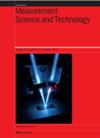法律计量学中的机器学习 - 检测酒精测试仪的故障
IF 3.4
3区 工程技术
Q1 ENGINEERING, MULTIDISCIPLINARY
引用次数: 0
摘要
由计量机构或警察部门对清醒检查站使用的酒精测试仪进行计量控制,以确保结果的准确性。仅靠定期检查来确保测量结果的准确性是不够的,因为仪器在两次核查之间可能会出现误差,而交通警察却无法发现这些误差。在本文中,我们提出了一项新建议,利用机器学习算法对仪器进行评估,该算法能够在故障发生前检测到故障。我们使用了仪器的历史测量数据,并应用了分类技术,从而为仪器贴上标签,以便在下一次验证之前指出那些可能会出现故障的仪器。对燃料电池进行实验,以确定哪些仪器的电池会在检查过程中影响测量结果。研究的最后是模拟使用仪器追踪随时间变化的磨损曲线。研究结果表明,可以应用机器学习来协助对呼吸式酒精检测仪进行计量控制,从而在交通检查中使用这些仪器时提供更多安全保障。本文章由计算机程序翻译,如有差异,请以英文原文为准。
MACHINE LEARNING IN LEGAL METROLOGY – DETECTING BREATHALYZERS’ FAILURES
Metrological control of breathalyzers used at sobriety checkpoints is done by metrological institutes or police departments to ensure the accuracy of the results. Periodic checks carried out to ensure accurate measurements are not enough, as instruments can have errors between verifications that are not detected by traffic agents. In this article, we present a new proposal to evaluate instruments using machine learning algorithms capable of detecting failures before they occur. Historical instrument measurement data is used, with the application of classification techniques and thus labeling the instruments in order to indicate those that may previously fail before the next verification. Experiments are performed with fuel cells to identify which instruments have cells that can compromise measurement results during inspections. The study ends with the simulation of using the instrument to trace the wear curve over time. The results show that it is possible to apply machine learning to assist in the metrological control of breathalyzers and thus provide more security when these instruments are used in traffic inspections.
求助全文
通过发布文献求助,成功后即可免费获取论文全文。
去求助
来源期刊

Measurement Science and Technology
工程技术-工程:综合
CiteScore
4.30
自引率
16.70%
发文量
656
审稿时长
4.9 months
期刊介绍:
Measurement Science and Technology publishes articles on new measurement techniques and associated instrumentation. Papers that describe experiments must represent an advance in measurement science or measurement technique rather than the application of established experimental technique. Bearing in mind the multidisciplinary nature of the journal, authors must provide an introduction to their work that makes clear the novelty, significance, broader relevance of their work in a measurement context and relevance to the readership of Measurement Science and Technology. All submitted articles should contain consideration of the uncertainty, precision and/or accuracy of the measurements presented.
Subject coverage includes the theory, practice and application of measurement in physics, chemistry, engineering and the environmental and life sciences from inception to commercial exploitation. Publications in the journal should emphasize the novelty of reported methods, characterize them and demonstrate their performance using examples or applications.
 求助内容:
求助内容: 应助结果提醒方式:
应助结果提醒方式:


